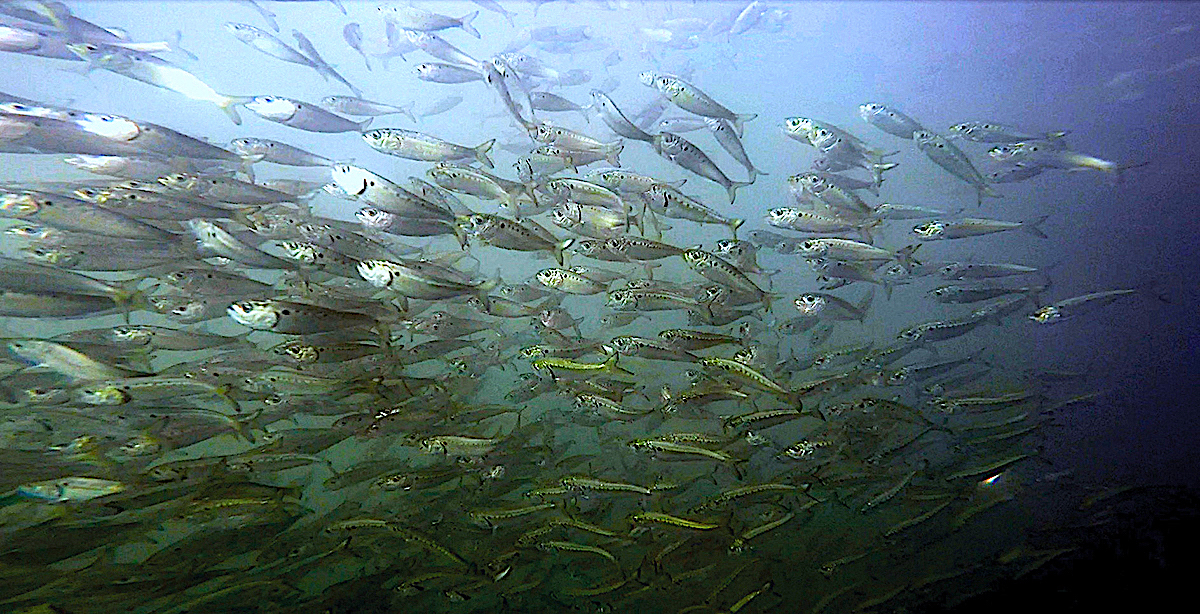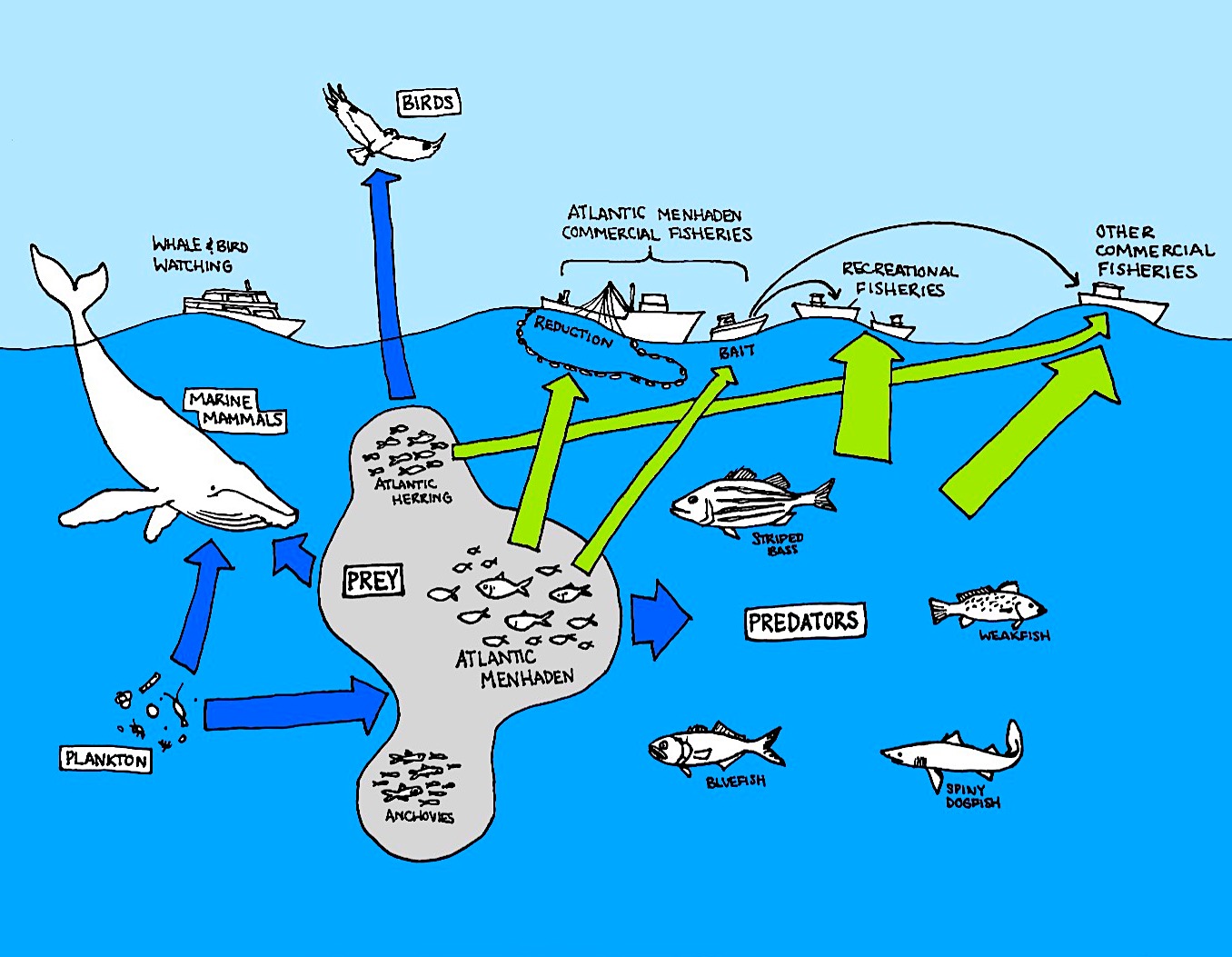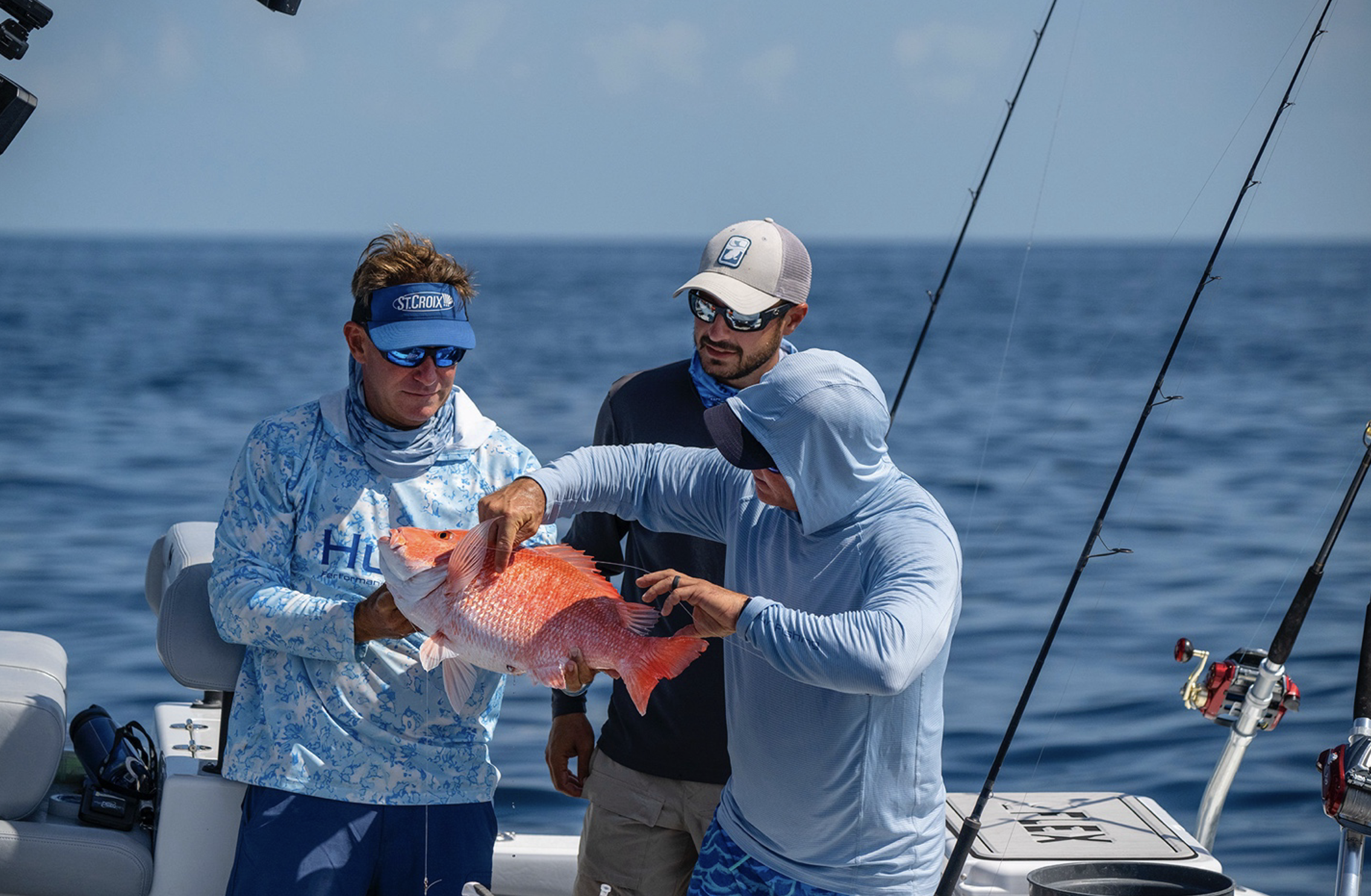Does it Help to Look at the Big Picture When Managing Menhaden?

A new model accounts for a number of factors that influence the populations of Atlantic menhaden and other species.
Research Need
Atlantic menhaden support one of the largest fisheries in the U.S. and are an important prey species for a variety of other animals, including striped bass, bluefish, marine mammals, and birds.
To account for the roles the species plays in the ecosystem, successful management of menhaden required the development of “ecological reference points” — useful benchmarks when setting target fishing rates or population sizes. Each ecological reference point depends on the management priorities for the ecosystem and the individual species, as well as the tradeoffs between them.

What did they study?
The development and adoption of ecological reference points took nearly two decades of dedicated work and analysis by dozens of academic, state, and federal scientists. The group explored many models, ranging from very simple models with minimal data requirements to complex ecosystem models with extensive data needs.
In the end, the group selected a moderately complex model, which incorporated several key predator and prey species in the region. The model allowed scientists to explore how different levels of fishing on one species can affect the other species in the ecosystem.
What did they find?
The model showed that striped bass was the most sensitive predator species with regard to the amount of menhaden in the water. This meant that if there were enough menhaden for striped bass, there should be enough for other fish, marine mammals, and birds.
However, the group also found that increasing menhaden population size alone would not recover the overfished striped bass population without other management adjustments for that species individually.
Anything Else?
Using models to find an ecological reference point is not the end of the process. Managers must evaluate the tradeoffs between prey and predator harvests in the region in order to set targets and thresholds that meet their management objectives.
The new menhaden ecological reference point accounts for the effects of menhaden harvest on its predators, as well as the impact of predators on menhaden, and suggests we should fish menhaden at a lower rate than if we only looked at menhaden as a single species without taking ecosystem considerations into account.
Using this new ecological reference point reduced the coastwide total allowable catch of menhaden by 10% for 2021-2022 from the previous single-species catch level.
Reading
Anstead, K.A., K. Drew, D. Chagaris, M. Cieri, A.M. Schueller, J.E. McNamee, A. Buchheister, G. Nesslage, J.H. Uphoff, M.J. Wilberg, A. Sharov, M.J. Dean, J. Brust, M. Celestino, S. Madsen, S. Murray, M. Appelman, J.C. Ballenger, J. Brito, E. Cosby, C. Craig, C. Flora, K. Gottschall, R.J. Latour, E. Leonard, R. Mroch, J. Newhard, D. Orner, C. Swanson, J. Tinsman, E.D. Houde, T.J. Miller, and H. Townsend. 2021. The Path to an Ecosystem Approach for Forage Fish Management: a Case Study of Atlantic Menhaden. Frontiers in Marine Science 8: 491. https://doi.org/10.3389/fmars.2021.607657

Summary by Kristen Anstead (left), a stock assessment scientist at the Atlantic States Marine Fisheries Commission. In addition to Atlantic menhaden, she works on the stock assessments for species such as horseshoe crab, spiny dogfish, and American eel, and on fish ageing projects. Kristen earned her Ph.D. from the Center for Quantitative Fisheries Ecology at Old Dominion University.
Lead photo: schooling Atlantic menhaden. Credit: Jerry Prezioso, NOAA Fisheries.
The text from Hook, Line & Science is available to reprint and republish at no cost, but only in its entirety and with this attribution: Hook, Line & Science, courtesy of Scott Baker and Sara Mirabilio, North Carolina Sea Grant.
- Categories:



